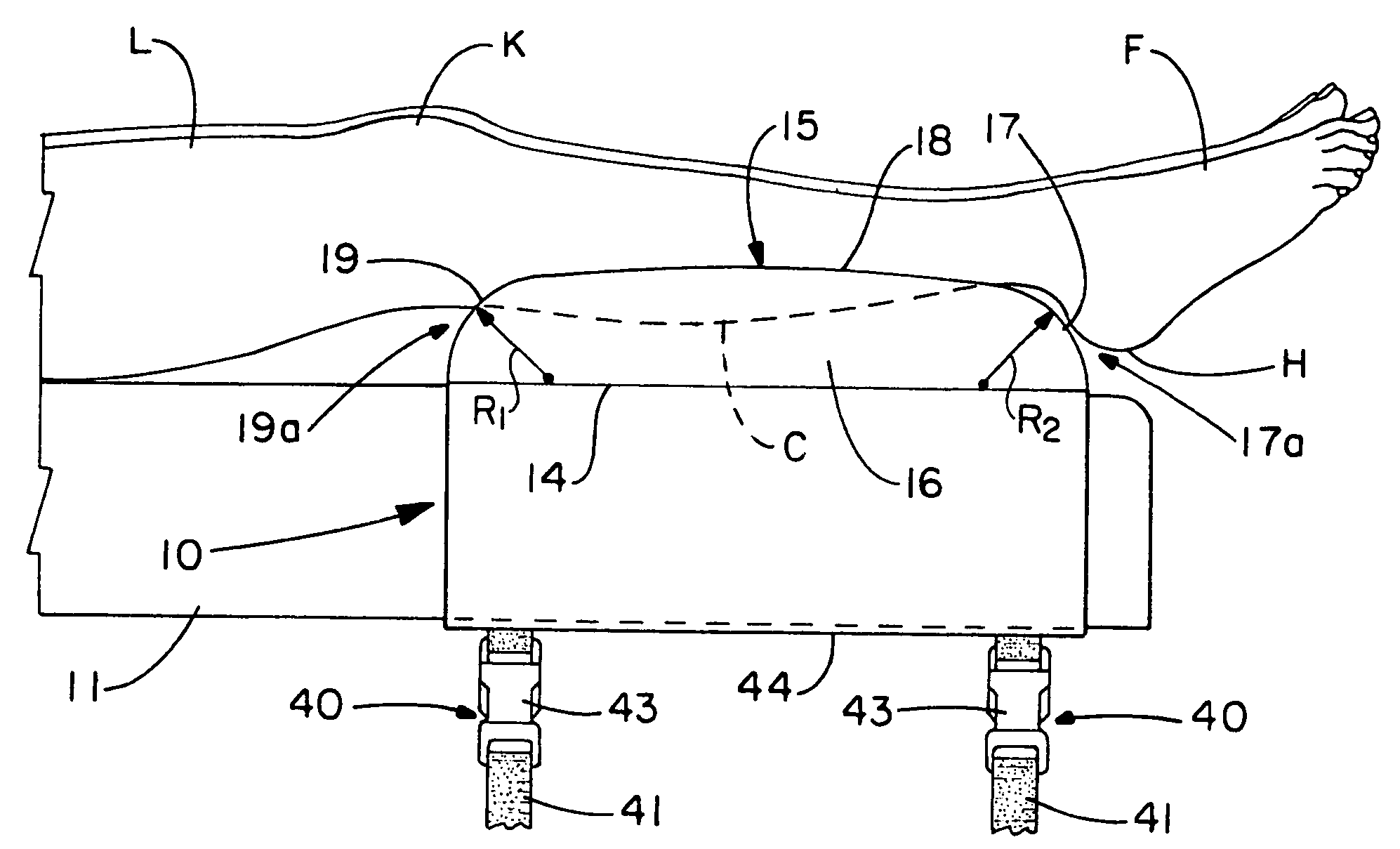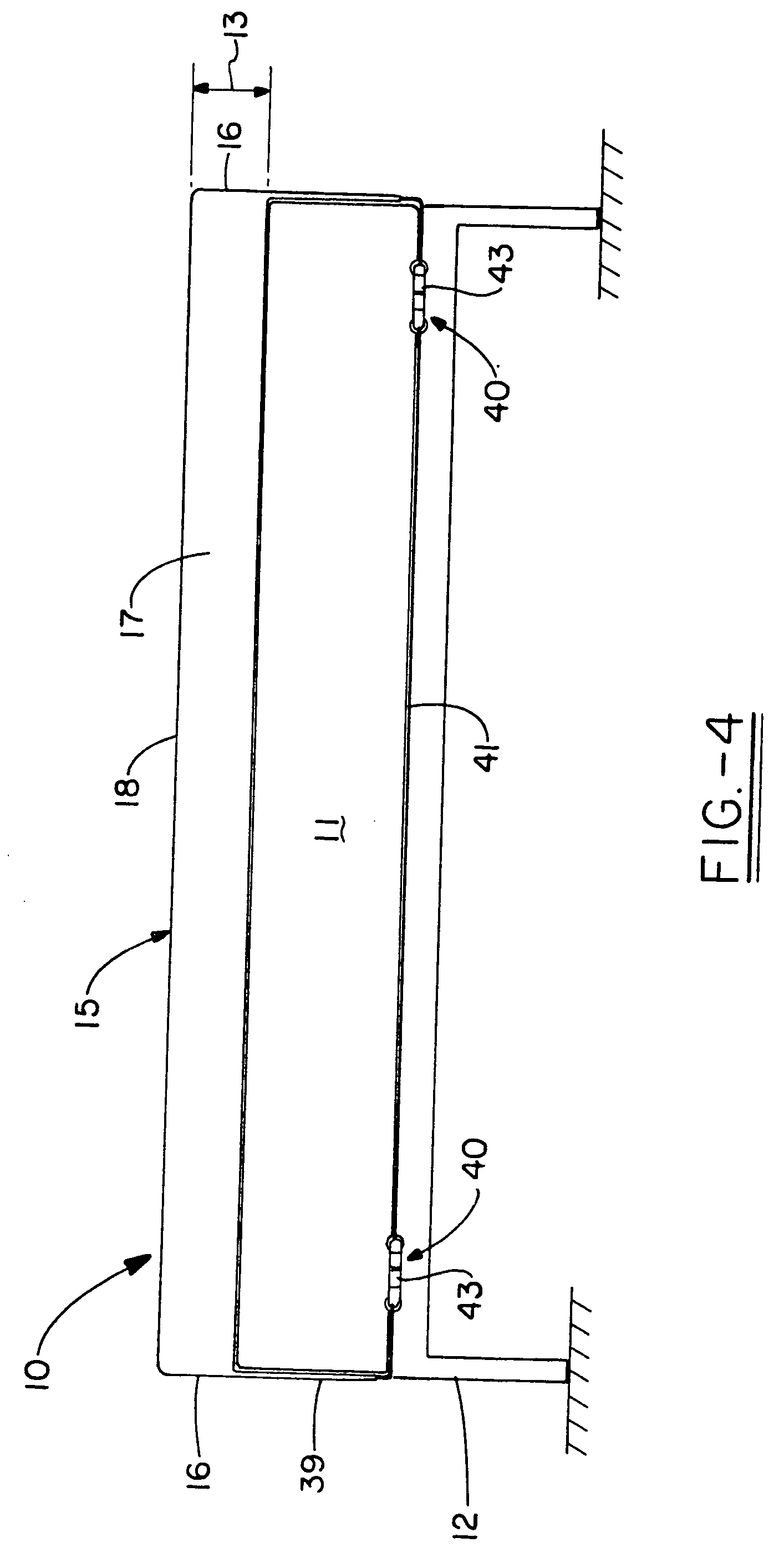Antidecubitus heel pad
a technology of heel pad and antidecubitus, which is applied in the field of heel pad, can solve the problems of increasing the cost of the patient or his or her insurance carrier, necrosis and the development of decubitus ulcers, and bedridden patients, and achieves the effect of reducing the likelihood of decubitus ulcers
- Summary
- Abstract
- Description
- Claims
- Application Information
AI Technical Summary
Benefits of technology
Problems solved by technology
Method used
Image
Examples
Embodiment Construction
[0013] An antidecubitus heel pad according to the concepts of the present invention is shown in the drawings and generally indicated by the numeral 10. Heel pad 10 may be used in conjunction with a mattress 11, which may be set on a frame 12, or other patient supporting structure. The heel pad 10 generally includes a cushion, generally indicated by the numeral 15 that is placed beneath the patient's calves C to take pressure, from the mattress 11 or other surface, off of the patient's heels H. Cushion 15 may be any cushioning material including foam, cotton, or inflatable bladders. In the example depicted in the drawings, a multilayered pad constructed of foam is used to provide a soft surface upon which the patient's calves C may rest. The cushion 15 generally has a base 14, a rear edge 17 and forward edge 19 extending upward from the base 14, a pair of ends 16 extending upward from the base 14, and a top surface connecting the ends 16 and edges 17, 19 opposite the base 14.
[0014] ...
PUM
 Login to View More
Login to View More Abstract
Description
Claims
Application Information
 Login to View More
Login to View More - R&D
- Intellectual Property
- Life Sciences
- Materials
- Tech Scout
- Unparalleled Data Quality
- Higher Quality Content
- 60% Fewer Hallucinations
Browse by: Latest US Patents, China's latest patents, Technical Efficacy Thesaurus, Application Domain, Technology Topic, Popular Technical Reports.
© 2025 PatSnap. All rights reserved.Legal|Privacy policy|Modern Slavery Act Transparency Statement|Sitemap|About US| Contact US: help@patsnap.com



